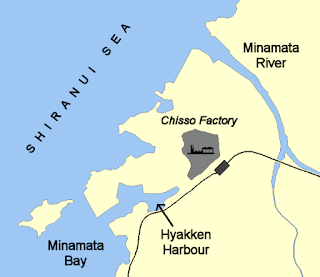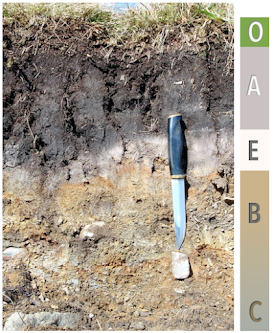DDT (dichloro-diphenyl-trichloroethane)
DDT was used worldwide between 1940 and 1970. DDT was initially used to prevent malaria and other insect-borne human diseases. The public later adopted DDT use to control insects in crops, institutions, gardens, homes, and livestock.
In the 1970s, DDT was severely restricted in Canada and the United States and completely banned in both countries in the 1980s. In 2001 with the Stockholm treaty, 151 countries signed the agreement to restrict or ban the use of DDT.
Currently, some countries still use DDT claiming that the consequences of malaria are worse than the consequences of the use of DDT; these countries are Ethiopia, South Africa, Uganda and Swaziland, India and North Korea.
In Colombia, DDT was used against malaria and for agricultural uses until the Colombian Agricultural Institute (ICA) discontinued it. In 1974 ICA banned DDT in tobacco cultivation, and in 1978, in coffee. In 1988 the use of most organochlorines (DDT included) was restricted, and DDT came under the exclusive control of the Ministry of Health to combat malaria. Finally, in 1994 its importation, production, marketing, application, and use were banned.
Health effects of DDT
The science of DDT's human health impacts has continued to mount over the years, with recent studies showing harm at very low levels of exposure. Studies show a range of human health effects linked to DDT and its breakdown products:
DDT is a highly polluting hazard, which s persistent in the environment and insoluble in the water. It is readily adsorbed to the sediments and the soils. Depending upon conditions, the half-life of DDT in the soil can range from 30 days to almost 30 years. In predatory birds, DDT can bioaccumulate due to its lipophilic properties. DDT is moderately toxic as it is a class 2 insecticide. The illegal use of DDT in agricultural systems should be controlled as it has serious environmental concerns.
DDT exerts devastating effects on aquatic organisms. It has low solubility, so its bioaccumulation rate is more significant in the water, posing long-term threats to aquatic life. It also exerts adverse effects on all kinds of wildlife, and due to its slow decaying rate, it can quickly proliferate to the entire life web, and through the food chain, it reaches the bodies of human beings. DDT and the products after its breakdown are transported from the warmer places to the Arctic by global distillation, where they accumulate in the food web regions.
Sources:
Is DDT Still Being Used? - WorldAtlas
América del Norte ya no usa DDT (cec.org)
¿Qué países siguen usando DDT? (411answers.com)
LA VENENOSA HERENCIA DEL DDT - Archivo Digital de Noticias de Colombia y el Mundo desde 1.990 - eltiempo.com
The DDT Story | Pesticide Action Network (panna.org)
Uses and Environmental Effects of DDT - W3schools
In the 1970s, DDT was severely restricted in Canada and the United States and completely banned in both countries in the 1980s. In 2001 with the Stockholm treaty, 151 countries signed the agreement to restrict or ban the use of DDT.
Currently, some countries still use DDT claiming that the consequences of malaria are worse than the consequences of the use of DDT; these countries are Ethiopia, South Africa, Uganda and Swaziland, India and North Korea.
In Colombia, DDT was used against malaria and for agricultural uses until the Colombian Agricultural Institute (ICA) discontinued it. In 1974 ICA banned DDT in tobacco cultivation, and in 1978, in coffee. In 1988 the use of most organochlorines (DDT included) was restricted, and DDT came under the exclusive control of the Ministry of Health to combat malaria. Finally, in 1994 its importation, production, marketing, application, and use were banned.
Health effects of DDT
The science of DDT's human health impacts has continued to mount over the years, with recent studies showing harm at very low levels of exposure. Studies show a range of human health effects linked to DDT and its breakdown products:
- Breast & other cancers
- Male infertility
- Miscarriages & low birth weight
- Developmental delay
- Nervous system & liver damage
DDT is a highly polluting hazard, which s persistent in the environment and insoluble in the water. It is readily adsorbed to the sediments and the soils. Depending upon conditions, the half-life of DDT in the soil can range from 30 days to almost 30 years. In predatory birds, DDT can bioaccumulate due to its lipophilic properties. DDT is moderately toxic as it is a class 2 insecticide. The illegal use of DDT in agricultural systems should be controlled as it has serious environmental concerns.
DDT exerts devastating effects on aquatic organisms. It has low solubility, so its bioaccumulation rate is more significant in the water, posing long-term threats to aquatic life. It also exerts adverse effects on all kinds of wildlife, and due to its slow decaying rate, it can quickly proliferate to the entire life web, and through the food chain, it reaches the bodies of human beings. DDT and the products after its breakdown are transported from the warmer places to the Arctic by global distillation, where they accumulate in the food web regions.
Sources:
Is DDT Still Being Used? - WorldAtlas
América del Norte ya no usa DDT (cec.org)
¿Qué países siguen usando DDT? (411answers.com)
LA VENENOSA HERENCIA DEL DDT - Archivo Digital de Noticias de Colombia y el Mundo desde 1.990 - eltiempo.com
The DDT Story | Pesticide Action Network (panna.org)
Uses and Environmental Effects of DDT - W3schools


